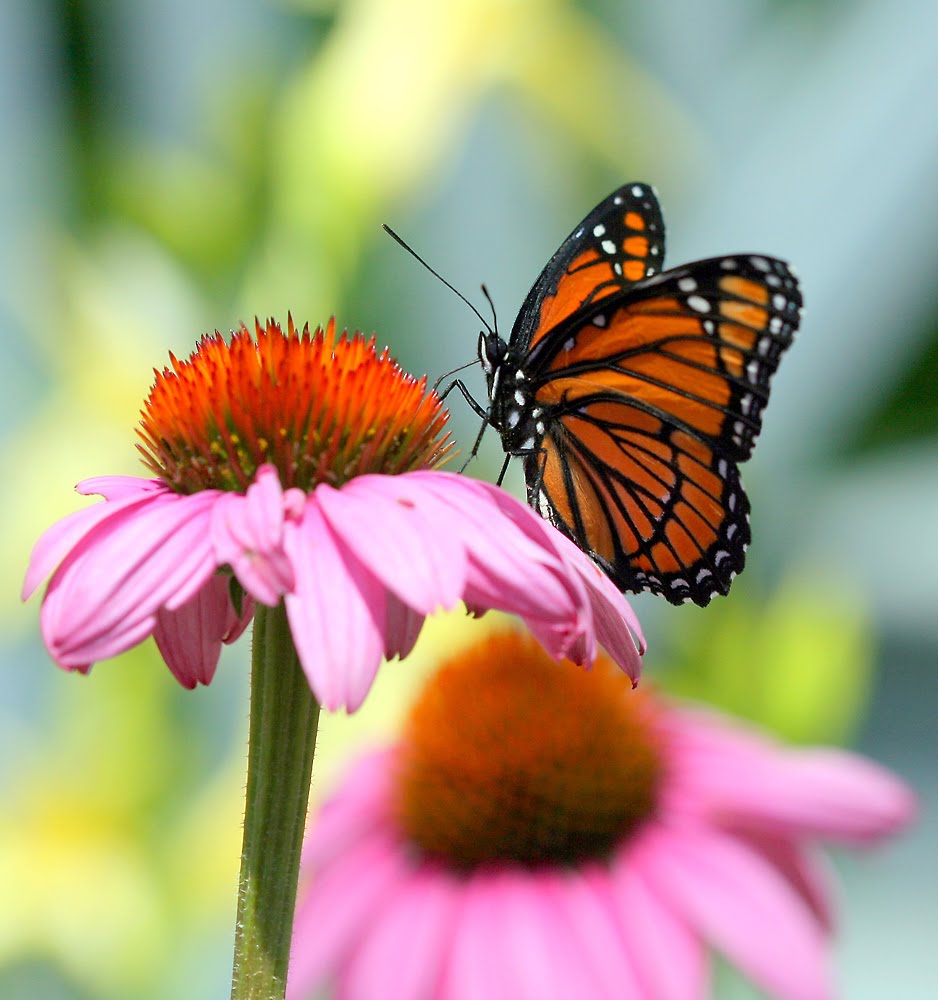 The Monarch butterfly (Danaus plexippus) is a milkweed butterfly (subfamily Danainae), in the family Nymphalidae. It is perhaps the best known of all North American butterflies. Since the 19th century, it has been found in New Zealand, and in Australia since 1871 where it is called the Wanderer. In Europe it is resident in the Canary Islands, the Azores, and Madeira, and is found as an occasional migrant in Western Europe. Its wings feature an easily recognizable orange and black pattern, with a wingspan of 8.9–10.2 centimetres (3½–4 in). (The Viceroy butterfly has a similar size, color, and pattern, but can be distinguished by an extra black stripe across the hind wing.) Female Monarchs have darker veins on their wings, and the males have a spot called the "androconium" in the center of each hind wing from which pheromones are released. Males are also slightly larger.
The Monarch butterfly (Danaus plexippus) is a milkweed butterfly (subfamily Danainae), in the family Nymphalidae. It is perhaps the best known of all North American butterflies. Since the 19th century, it has been found in New Zealand, and in Australia since 1871 where it is called the Wanderer. In Europe it is resident in the Canary Islands, the Azores, and Madeira, and is found as an occasional migrant in Western Europe. Its wings feature an easily recognizable orange and black pattern, with a wingspan of 8.9–10.2 centimetres (3½–4 in). (The Viceroy butterfly has a similar size, color, and pattern, but can be distinguished by an extra black stripe across the hind wing.) Female Monarchs have darker veins on their wings, and the males have a spot called the "androconium" in the center of each hind wing from which pheromones are released. Males are also slightly larger.The Monarch is famous for its southward migration and northward return in summer in the Americas which spans the life of three to four generations of the butterfly.
This spectacular species is one of the most popular and distinguished butterflies. It is a bright shade of brownish red to orange and is complimented by brown or black outlining the wings and highlighting the veins. The Monarch is one of the longest lived butterflies, living up to 9 months. Every year this butterfly makes an amazing journey, up to 3000 miles, as it migrates to warmer climates, such as Mexico. Even more amazing, the many generations of the butterfly return year after year to many of the same locations. Monarchs are fairly large butterflies and strong fliers; they enjoy open areas and love Milkweed. The monarch chrysalis is just as amazing. It is a shimmering green accented with gold, resembling priceless jewelry, a must-have in all Gardens With Wings












No comments:
Post a Comment